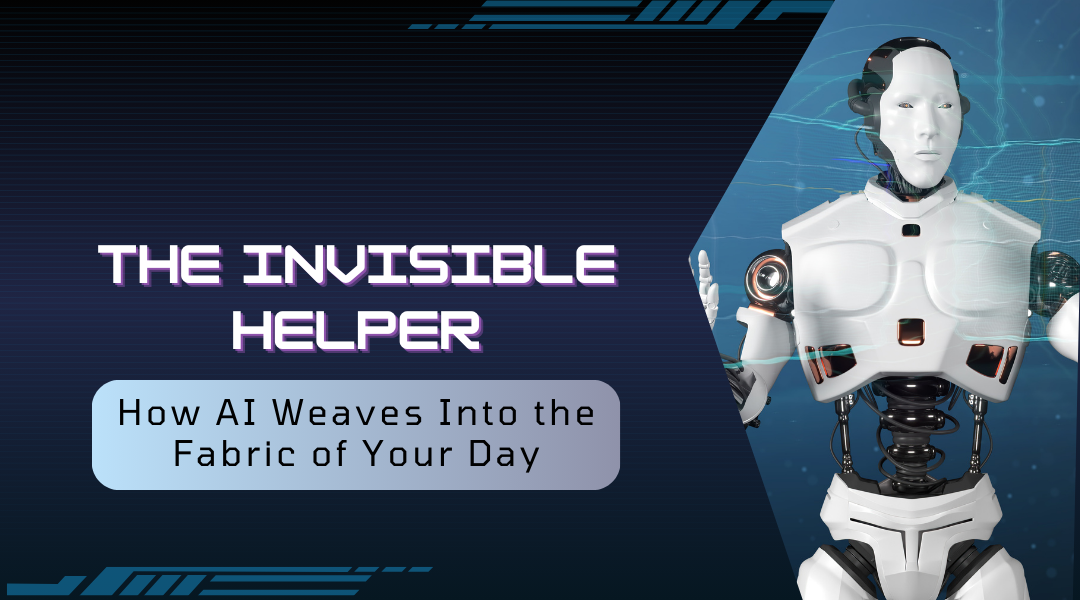We often imagine artificial intelligence as a far-off concept, something from science fiction. But the truth is far more ordinary, and because of that, far more extraordinary. AI isn’t a distant robot; it’s the seamless, almost invisible layer of intelligence integrated into the tools and services we use every day. It’s the quiet partner working in the background, learning your rhythms and preferences to make life a little smoother, a little easier, and a lot more personalized. Once you start to notice it, you’ll see it everywhere.
Your Morning, Curated
Your day likely begins before you’re even fully awake. That gentle alarm from your smartwatch that rouses you during a light sleep phase? That’s AI at work. By analyzing your movement and heart rate overnight, it learns your sleep cycles to find the optimal moment to wake you, avoiding that groggy feeling. It might then cue up a morning briefing that prioritizes news based on what you read yesterday, or a playlist that matches your morning energy level—perhaps something upbeat for a Monday and calming for a Sunday. It’s like having a personal assistant who knows whether you need a gentle nudge or a motivational speech to start your day.
A Smarter Commute
Gone are the days of blindly following a static map. When you hop in the car or plan your train ride, apps like Waze or Google Maps do more than just show a route. They’re running millions of simulations in real-time. They synthesize live traffic data, accident reports, road closures, and even the pace of traffic to dynamically find the fastest path. But it goes further. These tools can now predict future traffic based on historical patterns, suggesting you leave 15 minutes earlier for work because a concert is letting out downtown. They’re not just navigating space; they’re navigating time, turning a frustrating traffic jam into a problem you effortlessly avoid.
Your Personal Shopping Concierge
Online shopping can feel overwhelming, but AI cuts through the noise. It’s the reason a website seems to read your mind, showcasing a pair of shoes that perfectly matches the jacket you were looking at last week. This isn’t magic; it’s pattern recognition at a colossal scale. By analyzing what you and millions of others browse, purchase, and love, these systems act as a personal stylist or gadget guru. They can even predict what you might need next—sending a reminder to reorder pet food right before you run out or suggesting a perfect birthday gift for your friend based on their wishlist.
Entertainment That Knows You
Your downtime is powered by recommendation engines so sophisticated they feel psychic. When Netflix suggests a dark Scandinavian thriller after you’ve binged two similar series, or when Spotify’s “Discover Weekly” playlist uncovers a new band that feels like it was made just for you, that’s AI connecting the dots. It cross-references your habits with vast cultural databases to curate an entertainment experience uniquely tailored to your tastes, constantly introducing you to new favorites you’d never have found on your own.
Beyond the Obvious: The Subtle Touches
The reach of AI extends into surprising corners of our lives:
- In Your Home: A smart thermostat like Nest doesn’t just follow a schedule; it learns it. It notices you like it cooler at night and that you’re usually out on Tuesday afternoons, adjusting itself to save energy and maximize comfort without you lifting a finger.
- In Your Health: Fitness apps don’t just log your run; they analyze your stride, suggest personalized workout plans to break through a plateau, and can even flag potential health trends by correlating your activity data with your sleep patterns.
- In Your Community: Cities are using AI to optimize public services. It can predict which parks are most in need of maintenance, optimize garbage truck routes to save fuel, and even adjust public transit schedules in real-time to match unexpected demand.
Becoming an AI-Aware Citizen
The first step to engaging with this technology is simply to notice it. The next time you get a fraud alert from your bank for a suspicious transaction, that’s an AI model protecting you. When your phone’s camera automatically adjusts settings to take a perfect portrait, that’s AI recognizing a face and optimizing the image. These aren’t futuristic concepts; they are present-day utilities.
Start a conversation about it. Ask a friend if they’ve noticed how their music app seems to match their mood, or how their grocery app’s coupons are always for products they actually buy. This awareness transforms AI from an abstract concept into a tangible force in our lives.
Conclusion: The Seamless Partnership
The most successful technology doesn’t feel like technology at all; it feels like a natural extension of our own capabilities. This is the true promise of AI in our daily lives. It’s not about creating humanoid robots; it’s about creating a more responsive, efficient, and personalized world. It handles the tedious tasks of computation and prediction, freeing us up to focus on what humans do best: being creative, making emotional connections, and enjoying the experiences that these intelligent systems help to enable. AI is the invisible thread weaving through the fabric of modern life, making that fabric stronger, smarter, and more tailored to each of us.
